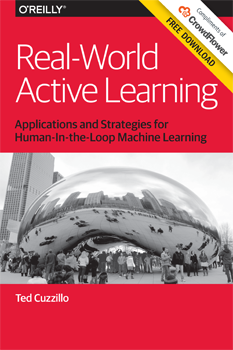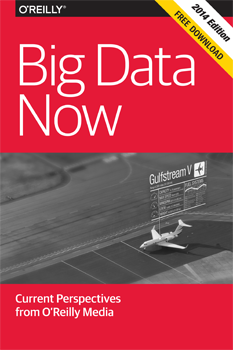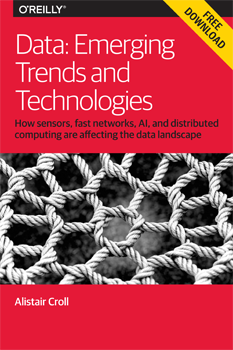"Big Data and Artificial Intelligence: Intelligence Matters" entries

The VR growth cycle: What’s different this time around
A chat with Tony Parisi on where we are with VR, where we need to go, and why we're going to get there this time.
Consumer virtual reality (VR) is in the midst of a dizzying and exhilarating upswing. A new breed of systems, pioneered by Oculus and centered on head-worn displays with breakthrough quality, are minting believers — whether investors, developers, journalists, or early-adopting consumers. Major new hardware announcements and releases are occurring on a regular basis, game studios and production houses big and small are tossing their hats into the ring, and ambitious startups are getting funded to stake out many different application domains. Is it a boom, a bubble, or the birth of a new computing platform?
Underneath this fundamental quandary, there are many basic questions that remain unresolved: Which hardware and software platforms will dominate? What input and touch feedback technologies will prove themselves? What are the design and artistic principles in this medium? What role will standards play, who will develop them, and when? The list goes on.
For many of these questions, we’ll need to wait a bit longer for answers to emerge; like smartphones in 2007, we can only speculate about, say, the user interface conventions that will emerge as designers grapple with this new paradigm. But on other issues, there is some wisdom to be gleaned. After all, VR has been around for a long time, and there are some poor souls who have been working in the mines all along. Read more…

Exploring methods in active learning
Tips on how to build effective human-machine hybrids, from crowdsourcing expert Adam Marcus.
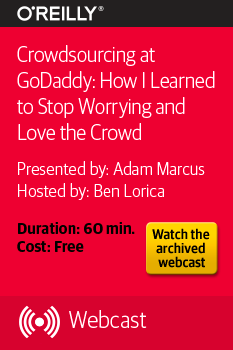 In a recent O’Reilly webcast, “Crowdsourcing at GoDaddy: How I Learned to Stop Worrying and Love the Crowd,” Adam Marcus explains how to mitigate common challenges of managing crowd workers, how to make the most of human-in-the-loop machine learning, and how to establish effective and mutually rewarding relationships with workers. Marcus is the director of data on the Locu team at GoDaddy, where the “Get Found” service provides businesses with a central platform for managing their online presence and content.
In a recent O’Reilly webcast, “Crowdsourcing at GoDaddy: How I Learned to Stop Worrying and Love the Crowd,” Adam Marcus explains how to mitigate common challenges of managing crowd workers, how to make the most of human-in-the-loop machine learning, and how to establish effective and mutually rewarding relationships with workers. Marcus is the director of data on the Locu team at GoDaddy, where the “Get Found” service provides businesses with a central platform for managing their online presence and content.
In the webcast, Marcus uses practical examples from his experience at GoDaddy to reveal helpful methods for how to:
- Offset the inevitability of wrong answers from the crowd
- Develop and train workers through a peer-review system
- Build a hierarchy of trusted workers
- Make crowd work inspiring and enable upward mobility
What to do when humans get it wrong
It turns out there is a simple way to offset human error: redundantly ask people the same questions. Marcus explains that when you ask five different people the same question, there are some creative ways to combine their responses, and use a majority vote. Read more…

Human-in-the-loop machine learning
Practical machine-learning applications and strategies from experts in active learning.
What do you call a practice that most data scientists have heard of, few have tried, and even fewer know how to do well? It turns out, no one is quite certain what to call it. In our latest free report Real-World Active Learning: Applications and Strategies for Human-in-the-Loop Machine Learning, we examine the relatively new field of “active learning” — also referred to as “human computation,” “human-machine hybrid systems,” and “human-in-the-loop machine learning.” Whatever you call it, the field is exploding with practical applications that are proving the efficiency of combining human and machine intelligence.
Learn from the experts
Through in-depth interviews with experts in the field of active learning and crowdsource management, industry analyst Ted Cuzzillo reveals top tips and strategies for using short-term human intervention to actively improve machine models. As you’ll discover, the point at which a machine model fails is precisely where there’s an opportunity to insert — and benefit from — human judgment.Find out:
- When active learning works best
- How to manage crowdsource contributors (including expert-level contributors)
- Basic principles of labeling data
- Best practice methods for assessing labels
- When to skip the crowd and mine your own data
Explore real-world examples
This report gives you a behind-the-scenes look at how human-in-the-loop machine learning has helped improve the accuracy of Google Maps, match business listings at GoDaddy, rank top search results at Yahoo!, refer relevant job postings to people on LinkedIn, identify expert-level contributors using the Quizz recruitment method, and recommend women’s clothing based on customer and product data at Stitch Fix. Read more…

Beyond AI: artificial compassion
If what we are trying to build is artificial minds, intelligence might be the smaller, easier part.
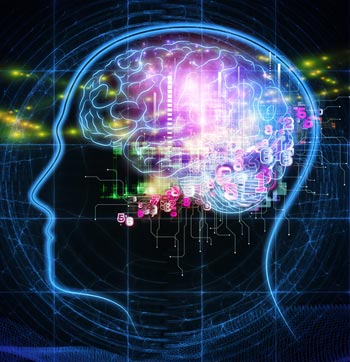 When we talk about artificial intelligence, we often make an unexamined assumption: that intelligence, understood as rational thought, is the same thing as mind. We use metaphors like “the brain’s operating system” or “thinking machines,” without always noticing their implicit bias.
When we talk about artificial intelligence, we often make an unexamined assumption: that intelligence, understood as rational thought, is the same thing as mind. We use metaphors like “the brain’s operating system” or “thinking machines,” without always noticing their implicit bias.
But if what we are trying to build is artificial minds, we need only look at a map of the brain to see that in the domain we’re tackling, intelligence might be the smaller, easier part.
Maybe that’s why we started with it.
After all, the rational part of our brain is a relatively recent add-on. Setting aside unconscious processes, most of our gray matter is devoted not to thinking, but to feeling.
There was a time when we deprecated this larger part of the mind, as something we should either ignore or, if it got unruly, control.
But now we understand that, as troublesome as they may sometimes be, emotions are essential to being fully conscious. For one thing, as neurologist Antonio Damasio has demonstrated, we need them in order to make decisions. A certain kind of brain damage leaves the intellect unharmed, but removes the emotions. People with this affliction tend to analyze options endlessly, never settling on a final choice. Read more…

Now available: Big Data Now, 2014 edition
Our wrap-up of important developments in the big data field.
- Cognitive augmentation: As data processing and data analytics become more accessible, jobs that can be automated will go away. But to be clear, there are still many tasks where the combination of humans and machines produce superior results.
- Intelligence matters: Artificial intelligence is now playing a bigger and bigger role in everyone’s lives, from sorting our email to rerouting our morning commutes, from detecting fraud in financial markets to predicting dangerous chemical spills. The computing power and algorithmic building blocks to put AI to work have never been more accessible.

Computational power and cognitive augmentation
A look at a few ways humans mesh with the rest of our data systems.
Editor’s note: this is an excerpt from our new report Data: Emerging Trends and Technologies, by Alistair Croll. Download the free report here.
Here’s a look at a few of the ways that humans — still the ultimate data processors — mesh with the rest of our data systems: how computational power can best produce true cognitive augmentation.
Deciding better
Over the past decade, we fitted roughly a quarter of our species with sensors. We instrumented our businesses, from the smallest market to the biggest factory. We began to consume that data, slowly at first. Then, as we were able to connect data sets to one another, the applications snowballed. Now that both the front office and the back office are plugged into everything, business cares. A lot.While early adopters focused on sales, marketing, and online activity, today, data gathering and analysis is ubiquitous. Governments, activists, mining giants, local businesses, transportation, and virtually every other industry lives by data. If an organization isn’t harnessing the data exhaust it produces, it’ll soon be eclipsed by more analytical, introspective competitors that learn and adapt faster.
Whether we’re talking about a single human made more productive by a smartphone-turned-prosthetic-brain, or a global organization gaining the ability to make more informed decisions more quickly, ultimately, Strata + Hadoop World has become about deciding better.
What does it take to make better decisions? How will we balance machine optimization with human inspiration, sometimes making the best of the current game and other times changing the rules? Will machines that make recommendations about the future based on the past reduce risk, raise barriers to innovation, or make us vulnerable to improbable Black Swans because they mistakenly conclude that tomorrow is like yesterday, only more so? Read more…

Cheap sensors, fast networks, and distributed computing
The history of computing has been a constant pendulum — that pendulum is now swinging back toward distribution.
Editor’s note: this is an excerpt from our new report Data: Emerging Trends and Technologies, by Alistair Croll. You can download the free report here.
The trifecta of cheap sensors, fast networks, and distributing computing are changing how we work with data. But making sense of all that data takes help, which is arriving in the form of machine learning. Here’s one view of how that might play out.
Clouds, edges, fog, and the pendulum of distributed computing
The history of computing has been a constant pendulum, swinging between centralization and distribution.The first computers filled rooms, and operators were physically within them, switching toggles and turning wheels. Then came mainframes, which were centralized, with dumb terminals.
As the cost of computing dropped and the applications became more democratized, user interfaces mattered more. The smarter clients at the edge became the first personal computers; many broke free of the network entirely. The client got the glory; the server merely handled queries.
Once the web arrived, we centralized again. LAMP (Linux, Apache, MySQL, PHP) buried deep inside data centers, with the computer at the other end of the connection relegated to little more than a smart terminal rendering HTML. Load-balancers sprayed traffic across thousands of cheap machines. Eventually, the web turned from static sites to complex software as a service (SaaS) applications.
Then the pendulum swung back to the edge, and the clients got smart again. First with AJAX, Java, and Flash; then in the form of mobile apps, where the smartphone or tablet did most of the hard work and the back end was a communications channel for reporting the results of local action. Read more…

Artificial intelligence: summoning the demon
We need to understand our own intelligence is competition for our artificial, not-quite intelligences.
A few days ago, Elon Musk likened artificial intelligence (AI) to “summoning the demon.” As I’m sure you know, there are many stories in which someone summons a demon. As Musk said, they rarely turn out well.
There’s no question that Musk is an astute student of technology. But his reaction is misplaced. There are certainly reasons for concern, but they’re not Musk’s.
The problem with AI right now is that its achievements are greatly over-hyped. That’s not to say those achievements aren’t real, but they don’t mean what people think they mean. Researchers in deep learning are happy if they can recognize human faces with 80% accuracy. (I’m skeptical about claims that deep learning systems can reach 97.5% accuracy; I suspect that the problem has been constrained some way that makes it much easier. For example, asking “is there a face in this picture?” or “where is the face in this picture?” is much different from asking “what is in this picture?”) That’s a hard problem, a really hard problem. But humans recognize faces with nearly 100% accuracy. For a deep learning system, that’s an almost inconceivable goal. And 100% accuracy is orders of magnitude harder than 80% accuracy, or even 97.5%. Read more…

Big data’s big ideas
From cognitive augmentation to artificial intelligence, here's a look at the major forces shaping the data world.

Looking back at the evolution of our Strata events, and the data space in general, we marvel at the impressive data applications and tools now being employed by companies in many industries. Data is having an impact on business models and profitability. It’s hard to find a non-trivial application that doesn’t use data in a significant manner. Companies who use data and analytics to drive decision-making continue to outperform their peers.
Up until recently, access to big data tools and techniques required significant expertise. But tools have improved and communities have formed to share best practices. We’re particularly excited about solutions that target new data sets and data types. In an era when the requisite data skill sets cut across traditional disciplines, companies have also started to emphasize the importance of processes, culture, and people. Read more…

Challenges facing predictive APIs
Solutions to a number of problems must be found to unlock PAPI value.
 In November, the first International Conference on Predictive APIs and Apps will take place in Barcelona, just ahead of Strata Barcelona. This event will bring together those who are building intelligent web services (sometimes called Machine Learning as a Service) with those who would like to use these services to build predictive apps, which, as defined by Forrester, deliver “the right functionality and content at the right time, for the right person, by continuously learning about them and predicting what they’ll need.”
In November, the first International Conference on Predictive APIs and Apps will take place in Barcelona, just ahead of Strata Barcelona. This event will bring together those who are building intelligent web services (sometimes called Machine Learning as a Service) with those who would like to use these services to build predictive apps, which, as defined by Forrester, deliver “the right functionality and content at the right time, for the right person, by continuously learning about them and predicting what they’ll need.”
This is a very exciting area. Machine learning of various sorts is revolutionizing many areas of business, and predictive services like the ones at the center of predictive APIs (PAPIs) have the potential to bring these capabilities to an even wider range of applications. I co-founded one of the first companies in this space (acquired by Salesforce in 2012), and I remain optimistic about the future of these efforts. But the field as a whole faces a number of challenges, for which the answers are neither easy nor obvious, that must be addressed before this value can be unlocked.
In the remainder of this post, I’ll enumerate what I see as the most pressing issues. I hope that the speakers and attendees at PAPIs will keep these in mind as they map out the road ahead. Read more…

